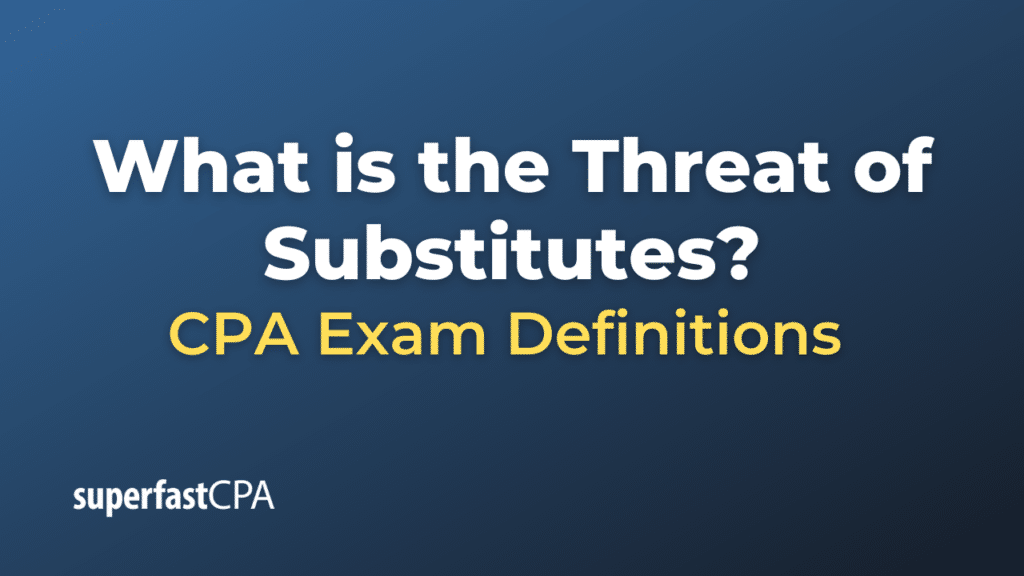Threat of Substitutes
The “threat of substitutes” is one of the five forces in Michael Porter’s Five Forces framework, which is a tool used to analyze the competitive environment and attractiveness of an industry. This framework helps businesses understand the external forces that might impact their profitability.
The threat of substitutes refers to the potential for alternative products or services to fulfill a similar need or function as the product or service offered by companies within an industry. If customers have the option to choose from several substitute products that offer a similar benefit, then the industry’s profitability can be threatened.
Factors that influence the threat of substitutes:
- Price and Quality of Substitutes: If substitutes are more affordable and/or of higher quality than the industry’s product, they pose a stronger threat.
- Switching Costs: If it’s easy and cost-effective for customers to switch to substitutes, then the threat is higher. Conversely, high switching costs can deter customers from choosing substitutes.
- Consumer Tendencies: If consumers are prone to experimentation or are not brand loyal, they might easily shift to substitutes.
- Perceived Level of Differentiation: If consumers see the industry’s product as highly unique or specialized, substitutes might pose a lower threat. However, if many similar products can fulfill the same need, the threat is higher.
- Availability: If substitutes are readily available and accessible to consumers, they can pose a higher threat.
Example of the Threat of Substitutes
Let’s delve into an example from the entertainment industry, specifically the market for home video entertainment.
Traditional Cable TV vs. Streaming Services
A few years back, many households primarily relied on traditional cable or satellite TV for home entertainment. This was the norm, and while there were other methods of watching shows and movies, like DVD rentals, cable was the dominant player for real-time broadcasting and a variety of channels.
Threat of Substitutes:
- Emergence of Streaming Services: Platforms like Netflix, Hulu, and Amazon Prime Video started offering a wide variety of shows and movies on-demand. Viewers could watch their desired content at any time, without ads, and often at a lower monthly price than a cable subscription.
- Price and Quality: For a fixed, often lower monthly fee compared to cable, users could access vast libraries of content. Plus, streaming services started producing high-quality original content, making them even more attractive.
- Switching Costs: The cost and hassle of switching from cable to a streaming service were minimal. With many modern TVs equipped for internet connectivity and devices like Roku or Chromecast available, setting up a streaming account became easy. Canceling a cable subscription and switching to streaming didn’t entail significant costs or technical challenges for most users.
- Consumer Tendencies: With the rise of mobile devices and changing viewing habits, especially among younger demographics, there was a shift towards on-demand consumption rather than being tied to a TV schedule.
- Perceived Level of Differentiation: Streaming platforms allowed users to customize their viewing experience, without ads, and offered unique content that wasn’t available on cable.
- Availability: High-speed internet became more widespread and affordable, making streaming a feasible option for more and more households.
Given these factors, streaming platforms emerged as a significant substitute for traditional cable TV. As a result, the cable TV industry saw “cord-cutting” become a trend, where many households canceled their cable subscriptions in favor of one or more streaming services.
In this scenario, traditional cable TV providers faced the profound threat of substitutes, challenging them to adapt by offering their streaming platforms, bundling services, or partnering with existing streaming giants.












